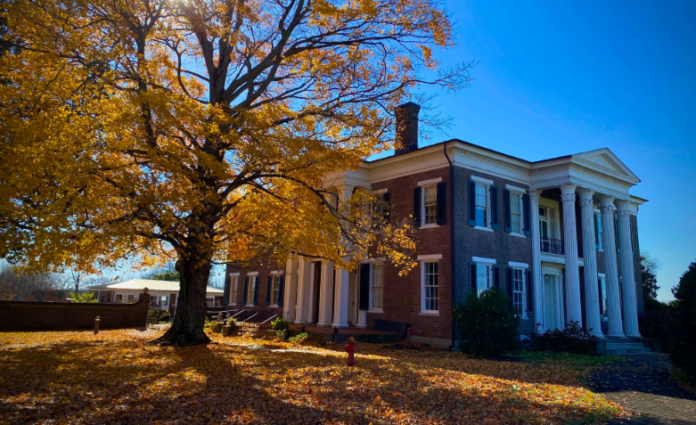Spring Hill, as part of Maury County and Williamson Counties, is beginning to see tourism growth and with travel and tourism as the third largest employer in Tennessee, and the second largest source of income for the state, growing tourist dollars coming into the city is good for both business owners and residents.
In 2021, Maury County taxpayers were able to save about $191 per household thanks to tourism dollars. This is up from 2019 levels when many more tourist savvy areas in the state have still not fully recovered their tourism dollars from pre-COVID times. In 2019, tourism income in Maury County was $106.3 million, and in 2021 it was $109.6 million.
“Tourism drives economic development and job creation so that every Tennessean can thrive,” said Governor Lee in a press release. “Our decision to prioritize strong recovery has yielded record levels of tourism growth, and we continue to welcome visitors to see all Tennessee has to offer, from the Mississippi River to the Great Smoky Mountains.”
As we have torn down more and more historic sites to build homes and business developments all over this county, at the same time there has been a growing interest in preserving Civil War Battlefield sites in the South. As far back as 1996 the federal government set up National Heritage Areas, and part of that was the creation of Tennessee Civil War National Heritage Area. It began receiving funds to use for Civil War Battlefield preservation in 2001. According to a 2012 Evaluation Report, Tennessee made major strides in preserving and interpreting battlefield sites since the creation of the project. Questions about this very thing were raised about a new development, The Crossings in Spring Hill, leading the developer to create a park where the Battle of Spring Hill was thought to have begun to preserve the site.
Currently, Spring Hill offers a self-guided walking tour of what is left of the lands upon where much of the Battle of Spring Hill took place. Spring Hill was the prelude to the Battle of Franklin, according to springhilltn.org. “On the night of November 28, 1864, General John Bell Hood’s Army of Tennessee marched toward Spring Hill to get astride Major General John M. Schofield’s Union army’s life line. Cavalry skirmishing between Brigadier General James H. Wilson’s Union cavalry and Major General Nathan Bedford Forrest’s Confederate troops continued throughout the day as the Confederates advanced… This was, perhaps, Hood’s best chance to isolate and defeat the Union army. The engagement has been described as ‘one of the most controversial non-fighting events of the entire war.’”
“Although mostly lost to commercial and residential development, an interpretive walking trail southeast of Spring Hill on Kedron Road and Reserve Boulevard helps visitors understand one of the most controversial events of the Civil War,” says battlefield.org. “Confederates camped around nearby Rippavilla Plantation … during the night of November 28-29, 1864.”
The Spring Hill Chamber of Commerce has asked for funding to promote more than just Rippavilla, which has been part of a recent scandal related to mismanagement of taxpayer funds, as a tourist destination. In other nearby Tennessee counties that have put a focused effort into promoting the whole county or the whole city into their historic tourism platform, tourist dollars now defray significant tax expense for local residents and have also made a significant positive impact on the quality of life in the community by increasing business. Maury County is beginning to see more positive results from tourist spending. The question now is how to manage what the city has to offer.
“In 2017, the city of Spring Hill purchased Rippavilla Plantation and tasked Rippavilla Inc. — a local nonprofit organization — with management of the site,” said a Williamson Home Page article. “While the eventual goal was to see the property become financially self-sustaining, the city supported Rippavilla Inc. with $100,000 annually for years.” It is now managed by The Battle of Franklin Trust, which manages a number of historical properties in Williamson County, including Carnton Plantation.
Middle Tennessee State University Center for Historic Preservation created a report under the banner of the Tennessee Civil War National Heritage Area saying that, “If properly maintained and interpreted, [Rippavilla] has the potential to be one of Tennessee’s preeminent locations to tell the stories of the antebellum era and slavery; the home front, combat, and guerilla warfare during the Civil War; and the ways in which the Cheairs family and the formerly enslaved people that lived at Rippavilla survived the challenges they faced in the decades following the Civil War…Surrounded by approximately 200 protected acres of core Spring Hill battlefield property, Rippavilla retains much of its original splendor and agricultural setting, despite its location in the heart of a rapidly developing city.”
While there are those who think that the Chamber’s desire to build tourism is coming too quickly after the management issues related to Rippavilla, with tourisms fast recovery in Tennessee, being 10% ahead of the national average, other groups feel that now is the very time to jump in to promote the city and county during this new wave of tourism.



























